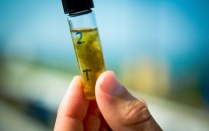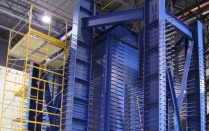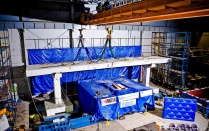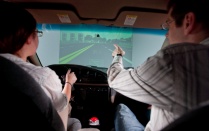
Negar Elhami-Khorasani
PhD
Research Topics
Resilient communities; Reliability analysis; Performance-based design; Cascading multi-hazard analysis; fire engineering; and earthquake engineering
- Sarreshtehdari, A., Elhami Khorasani, N. (2020). “Emergency response time for post-earthquake fires,” Journal of Earthquake Engineering, in press.
- Hua, N, Tessari, A., Elhami Khorasani, N. (2020). “Quantifying uncertainties in the temperature-time evolution of railway tunnel fires,” Fire Technology, https://doi.org/10.1007/s10694-020-01007-8.
- Ross, B., Yang, C, Kleiss, C., Okumus, P., Elhami Khorasani, N. (2020). “Tessellated structural-architectural systems: a concept for efficient construction, repair, and disassembly,” ASCE Journal of Architectural Engineering, 26(3), https://doi.org/10.1061/(ASCE)AE.1943-5568.0000418.
- Jovanovic, B., Van Coile, R., Hopkin, D., Elhami Khorasani, N., Lange, D., Gernay, T. (2020). “Review of current practice in probabilistic structural fire engineering – permanent and live load modelling.” Fire Technology, https://doi.org/10.1007/s10694-020-01005-w.
- Elhami Khorasani, N., Salado Castillo, J.G., Gernay, T. (2020). “A digitized fuel load surveying methodology using machine vision,” Fire Technology, https://doi.org/10.1007/s10694-020-00989-9.
- Elhami Khorasani, N., Salado Castillo, J.G., Saula, E., Josephs, T., Nurlybekova, G., Gernay, T. (2020). “Application of a digitized fuel load surveying methodology to office buildings,” Fire Technology, https://doi.org/10.1007/s10694-020-00990-2.
- Qureshi, R., Ni, S., Elhami Khorasani, N., Van Coile, R., Hopkin, D., Gernay, T. (2020). “Probabilistic models for temperature dependent strength of steel and concrete.” ASCE Journal of Structural Engineering, 146(6).
- Sarreshtehdari, A., Elhami Khorasani, N., Coar, M. (2020). “A stream-lined approach for evaluating post-earthquake performance of electric networks.” Sustainable and Resilient Infrastructure, 5(5), https://doi.org/10.1080/23789689.2018.1542211.
- Qureshi, R., Elhami Khorasani, N., Gernay, T. (2019). “Examining the need for active boundary conditions in structural fire testing.” Journal of Structural Fire Engineering, DOI: 10.1108/JSFE-12-2018-0042.
- Elhami Khorasani, N., Gernay T., Fang, C. (2019). “Parametric study for performance-based fire design of US prototype composite floor systems.” ASCE Journal of Structural Engineering, 145(5).
- Gernay, T., Elhami Khorasani, N., Garlock, M.E.M. (2018). “Fire fragility functions for steel frame buildings: Sensitivity analysis and reliability framework.” Fire Technology, 55:1175. https://doi.org/10.1007/s10694-018-0764-5
- Elhami Khorasani, N., Gernay, T., Garlock, M.E.M. (2017). “Data-driven probabilistic post-earthquake fire ignition model for a community.” Fire Safety Journal, 94:33-44.
- Gernay, T., Elhami Khorasani, N., Garlock, M.E.M. (2016). “Fire fragility curves for steel buildings in a community context: a methodology.” Engineering Structures. 113: 259-276.
- Elhami Khorasani, N., Garlock, M.E.M., Quiel, S.E. (2015). “Modeling steel structures in OpenSees: enhancements for fire and multi-hazard probabilistic analysis.” Journal of Computers and Structures, 157: 218-231.
- Elhami Khorasani N., Garlock M.E.M., Gardoni P. (2014). “Fire load: survey data, recent standards, and probabilistic models for office buildings.” Engineering Structures, Elsevier, 58: 152-165.









